
29 minute read
TOURISM
Tourism Executive Roundtable
Industry experts weigh in on Alaska’s summer travel forecast
By Tracy Barbour
After a devastating “lost season” in 2020, Alaska tourism stakeholders are hoping this summer will see a much-needed return of visitor spending—or at least the start of the recovery process.
Alaska went from expecting 1.5 million cruise passengers in 2020 to experiencing a dearth of cruise ships coming to the state, according to Alaska Chamber President and CEO Kati Capozzi. And with half of Alaska’s visitors historically arriving by cruise ship, this greatly reduced the number of visitors who traveled within the state. Many businesses in the community were impacted—and not just in the typical, tourism-oriented cities—but also in places up north.
The effect was also felt by local governments, especially those— like Fairbanks—whose budgets rely heavily on land-touring cruise passengers to generate hotel/motel taxes. “It had an effect we are still
grappling to understand,” Capozzi says. “And with the news [that] it will be a severely suppressed 2021 season, we are just trying to figure out how to get through it.”
So is Deb Hickok, president and CEO of Explore Fairbanks. Fairbanks, like many other places in Alaska, has been pounded by tourism-related losses. The leisure and hospitality industry— composed primarily of tourism or tourism-related jobs—for the Interior Region experienced a dramatic decline in jobs. The region, which includes Denali and Fairbanks, usually has an annual average of 6,000 leisure and hospitality jobs per month, peaking at 8,300 in July, says Hickok. But in 2020, leisure and hospitality averaged just 4,225 jobs per month, peaking at 5,500 in July, Hickok says, citing Alaska Department of Labor and Workforce Development statistics.
Hotel/motel tax collections also took a major hit in the Fairbanks North Star Borough region. According to Hickok, the region’s hotel/motel taxes had five years of unprecedented increase, with 2019 generating the highest numbers to date in both summer and winter. She says: “The lack of cruises to Alaska has had a devastating impact, given the important role the cruise market plays in our summer visitor season. In 2016 the Alaska Visitor Statistics Program indicated that of Interior Alaska’s 320,000 summer visitors, 41 percent, or 131,200 were on a cruise land tour. Through December 2020, hotel/ motel taxes for the region showed a 54.51 percent decrease from 2019. This extraordinary growth made the unprecedented fall-off-the-cliff in 2020 even more devastating.”
Visit Anchorage President and CEO Julie Saupe echoes her peers’ sentiments saying, “In Anchorage, 2020 saw a 57 percent drop in people passing through the airport. Hotel demand in 2020 was down 33 percent year-over-year. On the employment front, the travel industry shed 4,500 local jobs in 2020.”
Saupe says the industry locally has done everything it can to diversify its offerings in the short term and to show potential travelers that it is ready to welcome them when the time is right. “We have our work cut out for us, but

as conditions improve, there are some encouraging signs that travelers’ tastes in 2021 align well with what we have here in Alaska,” she says. “Looking ahead, the emphasis has to be on independent travel, which was a significant swath of Anchorage’s overnight visitation yearround, even before COVID-19.”
It has been an incredibly tough year, says Bill Popp, president and CEO of the Anchorage Economic Development Corporation (AEDC). But he doesn’t think Alaska has seen the full details and scope of the damage that was done in 2020. The lost jobs and revenue in the leisure and hospitality sector has severely affected businesses, although federal aid has helped. Many companies have resorted to minimal operation models just to keep business going while others closed completely.
However, members of Alaska’s tourism industry continue to move forward. With outward-facing service businesses—not just those in leisure and hospitality—there is a significant shift to observing strict protocols for COVID-19. “They have to assure their customers that they can interact with them and provide the experience safely,” Popp says. “We’re seeing a significant marketing shift trying to assure out-of-state visitors that they can come here safely. And I think there is a more conservative view in terms of what they expect in terms of revenue and costs.”

In Kodiak, the magnitude of tourism losses during the 2020 season was “colossal,” says Aimee Williams, executive director of Discover Kodiak. “Many of our wilderness lodges did not even have enough business scheduled to make it possible to operate,” she says. “Industry members are hoping for the best in 2021 but are remaining realistic because we understand that we have a higher-than-average vaccination rate on our island.”

Aimee Williams
Discover Kodiak Feedback Indicates Strong Interest in Alaska
So what feedback have tourism industry members received from people in anticipation of the coming season, and what are the implications? Responses have mostly been positive, such as the feedback Saupe has seen from “likely” US travelers. “Broadly speaking, travelers say they want open spaces, parklands, and natural beauty more than ever,” she says. “That’s certainly the type of thing we can deliver.”
She adds: “There’s also some indication that Anchorage and Alaska specifically are near the top of travelers’ wish lists, particularly if they’re considering destinations in the Western United States. Beyond that, there’s an opportunity to grab the attention of travelers that might normally head overseas to vacation. In light of uncertainties around international travel, these travelers may look more closely at domestic options that still pack something epic and new.”
People have indicated that they are eagerly waiting for the time when they can vacation in Alaska again. Some customers have said they miss coming to Alaska and are extremely excited about the prospect of returning to Kodiak. And the pandemic has been particularly disruptive to people who make regular trips to the area. “There are some guests who did not make it to Kodiak last season for the first time in over twenty years,” Williams explains.
Fairbanks is receiving a few travelers who are defying the pandemic to visit the state. Hickok explains: “We have been seeing a ‘trickling of intrepid’ visitors throughout last summer, aurora, and winter seasons, with noticeable blips over the Christmas/New Year holidays and President’s Day Weekend/ Valentine’s Day and anticipated throughout the month of March. The summer forecast is hazier.”
But Hickok says, national data indicates that American travelers long to travel and are gaining more confidence as vaccinations become more widespread. “The general consensus as of now is that visitation will start out slow in May and gradually increase through the summer—which actually has been a consistent pattern for a number of years,” she says.
To compensate for the scarcity of travelers from outside, Alaska’s tourism marketers have been diligently searching for new opportunities to promote travel within the state. A prime example is the Show Up for Alaska campaign, which offered attractive deals for locals and encouraged them to get out and explore their own backyard. “A lot of Alaskans took advantage of that last year,” Capozzi says. “Instead of taking a trip down South, many Alaskans chose to stay in Alaska.”
Tourism marketers are aggressively promoting independent travel. “Alaska offers a safe, exotic place to come visit and it’s still on the confines of the US borders,” she says. “We think we have a lot to offer the independent traveler. You can spread out, be safe, and be socially distant here.”
In the midst of the pandemic, safety is top of mind for almost everyone. There is an expectation that visitors have that they want to be safe when they visit the state, Popp says. Consequently, participants in Alaska’s leisure and hospitality sector are rebuilding their business model to provide services as safely as possible.
Bill Popp
Anchorage Economic Development Corporation
It’s going to be difficult to be in full operation this year for any tourism operator (in terms of volume), Popp says. And it’s because of factors that businesses have no control over. “If our city and state move forward on becoming rapidly vaccinated and if we continue wearing masks and social distancing, we will see businesses have an opportunity to open up more quickly,” he explains. “It’s incumbent upon us all—not just the leisure and hospitality industry—to continue to observe social distancing, practice mask wearing, and get vaccinated as soon as it’s available to us.”
Saupe, like most of her colleagues, is doubtful about when things will return to normal. “For this summer, I don’t know that there’s a ‘back to normal’— but I do think there’s a way through to the other side,” she explains.
Continuing, she says: “Anchorage is going to have plenty for people to see and do—lots of travel options, activities and attractions open, much like with any year. Our job is really all about showing people what there is to see and do.”
In Fairbanks, tourism businesses models are very diverse, but it will take years for the hard-hit industry to recover, Hickok says. In the meantime, COVID-19 best practices will continue to remain in place. “Since April, the Explore Fairbanks website has listed detailed information on what safety and sanitation protocols businesses have established,” she says. “We are launching an Explore Fairbanks Responsibly Pledge, which will mirror pledges in place by Visit Anchorage and “Our hope is that vaccination levels will be high enough to make people feel safe enough to travel again. Our tourism partners, along with the bears, fish, otters, whales, eagles, and puffins, will be ready once tourism begins again.”
Aimee Williams, Executive Director, Discover Kodiak
LOOKING BACK.
Moving forward.

Deb Hickok

Explore Fairbanks For more than four decades, our traditional Iñupiaq values have provided the foundation for our corporate success, guiding Arctic Slope Regional Corporation toward its full potential. While we continue to look back for guidance, we remain focused on the future and committed to serving our shareholders and benefiting Alaskans. We are proud of the contributions we’ve made to Alaska, and look forward to continued growth and success as one of Alaska’s leading businesses.
asrc.com
Discover Denali, so we have consistency throughout the Railbelt.”
Hickok says that in her thirtynine years in the field of destination marketing, she has never witnessed such dramatic losses for the travel industry. And unless there is targeted governmental assistance for tourism and hospitality, some businesses will not survive. However, she says she is inspired every day by the fortitude demonstrated by tourism businesses. “As for Explore Fairbanks, despite staff reductions and reduced pay for the remaining staff in 2020, we continued marketing efforts with a gradual roll out starting in April 2020 to local, statewide, and national audiences at the appropriate times with nuanced messaging,” she says.
She continues: “The winter version is still in process and the summer 2021 is to be fully launched by mid-April. All include Explore Fairbanks Responsibly messaging. While dramatically smaller in number, visitors from the Lower 48 are finding their way to Fairbanks and Interior Alaska.”
Like most of the state’s tourism industry leaders, Williams is not expecting the sector to make a full recovery in 2021. She does think it will be much better than 2020 but does not think everyone who is looking to travel to Kodiak will feel comfortable enough to do so. However, Kodiak is adhering to local, state, and federal government safety guidelines. William says: “Kodiak has a green, yellow, and red system for what the COVID-19 regulations are on the island. The levels are determined by the number of active cases and what the community transmission rates are. Any restrictions or guidelines would stem from those green, yellow, and red levels.”
Anchorage businesses were optimistic going into 2021 that the summer tourism season would recover—not to the levels of 2019—but certainly better than 2020. At this time, companies are trying to determine what the future holds regarding local restrictions and inbound tourism volume for the summer. “Restrictions put in place by local cities and towns will be determined by COVID case counts and vaccination levels,” says Bruce Bustamante, president and CEO of the Anchorage Chamber of Commerce. “At
He also says he does not believe all tourism businesses will be back to full operations this summer, and this will vary by the type of businesses and whether they provide service or product delivery. “The key variables that will determine tourism volume are the levels of CDC [Centers for Disease Control and Prevention] restrictions

Bruce Bustamante
Anchorage Chamber of Commerce

imposed on the cruise industry and the status of large passenger vessels traveling through Canadian waters,” he says.
Canadian Ban and CDC Deliver Double Whammy
The Canadian ban on large cruise ships—those carrying more than 100 passengers—through Canadian waters will have a devastating effect on Alaska tourism. The reason: Unless it is USregistered, a cruise ship that departs from Seattle for a trip to Alaska must first call at a Canadian port. And since the larger cruise lines tend to be registered with foreign nations—not the United States—that means fewer cruise tourists can come to Alaska. However, tourism had experienced significant increases year over year up to the 2020 pandemic, and then the cruise ship industry virtually evaporated. “Alaska businesses suffered the effect of completely losing cruise ship tourists for the summer, and another summer of reduced volume will be extremely impactful on these businesses,” Bustamante says.
The Canadian cruise ship ban and the CDC’s nebulous restrictions are two huge, multilayered problems. The Canadian ban could possibly be lifted later, but the CDC’s uncertain guidelines are an even bigger challenge for Alaska. The procedures are not clearly defined, leaving Alaska’s tourism businesses wondering if they will be able to meet the eventual requirements by summer. “We don’t have time on our hands to figure this out,” Capozzi says. “The tourism season is quickly approaching. These are precious days and weeks for us ahead, and if it’s not sorted out, there will be a problem.”
From Anchorage’s standpoint, Saupe says, Canada’s ban on large cruise ships means there’s work to be done to make this summer as successful as possible for the community. “Before the pandemic, between 50 and 60 percent of the municipality’s overnight visitation came from independent travelers in the summer,” she says. “Canada’s announcement is likely to have big ramifications for Alaska travel, but it’s possible Anchorage could fare somewhat better than communities that have a much greater reliance on cruise.”
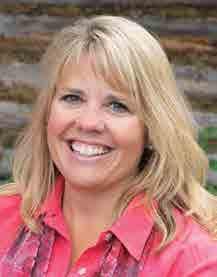
Julie Saupe
Visit Anchorage
Revenue and Visitor Projections
Not surprisingly, Alaska’s tourism executives are hard pressed to offer revenue or visitor predictions for this summer. Saupe, for example, says it’s difficult to make projections when so much depends on national and even global developments. “Still, we know there is pent-up demand for travel and that Alaska is very attractive to travelers who have been dreaming of open
Proud to work hard for Alaska’s hardworking companies
3800 Centerpoint Drive, Suite 540 Anchorage, Alaska 99503 Call 907.272.0114 or visit usi.com

Employee Benefits | Property & Casualty Specialty Programs | Personal Risk | Retirement Consulting
spaces,” she says. “We also have heard from potential travelers that they are watching and are aware of the incredible work done by Alaska’s health providers in getting Alaskans vaccinated.”
In addition, Saupe notes that Anchorage and Alaska as a whole rank highly on the wish lists of likely US travelers, based on research conducted by destination analysts. Anchorage, she says, was also the fourth mostsearched destination for flights on Kayak, which is an encouraging indicator as people plan.
Williams also harbors feelings of uncertainty—and hope. “Everything we are doing for the 2021 season is in a state of flux,” she says. “Kodiak had fifteen cruise ship visits planned and are down to having only five left on the official schedule. Our cruise ship schedule was scheduled to start on May 1, 2021, and now if there are any ships arriving, the first one will be on August 26, 2021.”
With tourism being a significant part of Kodiak’s economic base, not having guests come to the island is affecting many of its small businesses and artists. “Our hope is that vaccination levels will be high enough to make people feel safe enough to travel again,” Williams says. “Our tourism partners, along with the bears, fish, otters, whales, eagles, and puffins, will be ready once tourism begins again.”
Alaska is ready to have visitors, Williams says, and she encourages travelers to come whenever they feel safe to do so. “The Alaska tourism infrastructure has been working hard to create protocols to keep guests safe,” she says. “About one third of Kodiak Island’s population is currently vaccinated, and we miss seeing guests from all over the world.”


Additional Insights and Reassurances
Alaska’s tourism executives offered encouragement and advice for anyone who is contemplating a trip to Alaska. Capozzi emphasizes that Alaska is open for business and a safe state to visit. In fact, she says, Alaska is the most vaccinated state and has some of the lowest COVID-19 case numbers in the country. She heartily welcomes independent travelers, urging: “We’re ready for you. It will be one of the best times to visit because it will be less crowed.”
Popp highlights that Alaska is an exotic and stunning place to vacation in the summer. He thinks 2021 will be one of the greatest summers to travel to the state because there will be less congestion, giving visitors more room to spread out and explore. Prior to COVID-19, Alaska saw up to 2 million visitors per season; this year, the state is expecting hundreds of thousands, he says. Visitors can indulge in land tours, take incredible independent trips, and enjoy some good travel bargains. And they can do so safely because of the protocols Alaska has in place. “We’re a state that has been embracing vaccinations…. I think our community will be a safe place to visit this summer.”
Saupe encourages people to know their responsibilities while traveling and take advantage of trip-planning resources. She says: “Together, we keep each other safe. We have a great deal of focus right now on explaining travel mandates, testing, and health and safety protocols from all levels of government in a clear, concise, and easy-to-understand way…There are many resources available to help plan a trip, including organizations like ours, and I’d anticipate that there will be opportunity to find great deals for their Alaska experience.”
Bustamante extends this enthusiastic invitation, saying: “There are still many wonders to experience in our great state, and many accommodations, restaurants and tourism operators will be open for business. We still have mountains, glaciers and wildlife to enjoy, so please make plans to come up this summer.”
And Hickok issues a short and simple plea: “Come, enjoy our open spaces, and travel responsibly.”
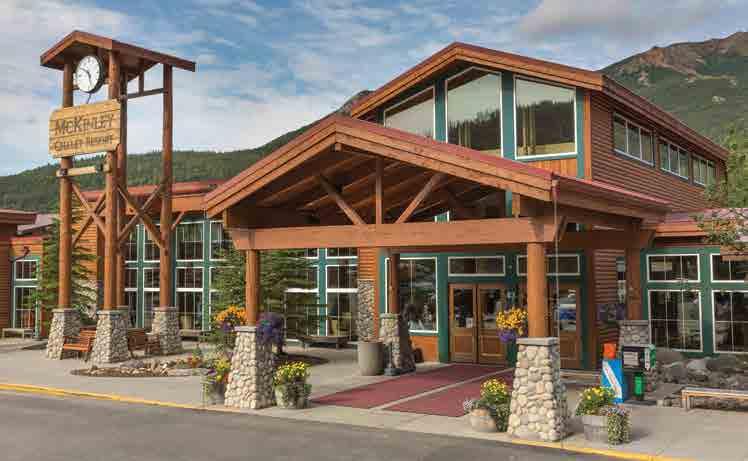


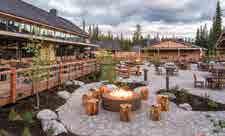

Arctic Harvest Deliveries
Favoring Fresh Eats
Why dining on Alaskan-grown products is worth the effort
By Vanessa Orr
Restaurant owners are heeding the call of the many Alaskans who want to support local farmers by buying local produce. But that’s easier said than done in the 49th State, where getting the food from farm to table takes extra time, money, and effort. Fortunately, there is an increasing number of people in the food industry—from farmers to distributors to restaurant owners—who are committed to creating a sustainable pipeline.
“While it’s trendy to work directly with farms, most restauranteurs find that the logistics are too challenging; you have to have an avenue to consolidate and move products over great distances, and that’s a huge undertaking,” explains David McCarthy, owner and founder of Northern Hospitality Group, which operates 49th State Brewing Company. “It’s taken us more than fifteen years to create a network of farmers and ranchers that we can work with all over the state.”
“For a restaurant to make the commitment to look for Alaskagrown products, and to make those extra phone calls and accept another delivery truck coming to their location, takes extra effort,” agrees Amy Pettit, executive director for Alaska Farmland Trust. “So many restaurants are used to the pipeline of food that comes from the Lower 48 that it’s hard to get them to make changes.”

Getting the Food to Market (or Table)
The good news is that there are plenty of people and companies willing to go the extra mile to bring Alaskagrown products to market.
Kyla Byers, owner of Arctic Harvest Deliveries, aggregates products from multiple farms around the state (mostly from the Mat-Su Valley) to provide a one-stop shop for chefs to buy produce, meat, eggs, and other products. In addition, the company offers retail sales as farm-share subscriptions.
“We collaborate with farmers on their crop plans so that they can meet the demands we see from chefs and our retail customers,” Byers says, adding that they make several weekly product deliveries from the Valley into Anchorage. “Without this service, restaurants would have to call individual farmers, check product availability, work out pricing, and coordinate everyone’s days of delivery. We consolidate everything and provide consistent delivery days and invoicing; it just makes things a lot more convenient.”
Chefs are notoriously busy, so simplified logistics makes Alaska-grown products more accessible.
“Restaurants are able to shoot us a text of what they want, and we can shoot them an email of what we have,” says Byers. “We also have an online ordering system if they want to do it on their own; they can see what we have, what it costs, and what farms it is coming from.”
What’s unique about Arctic Harvest Deliveries, which has been in business for five years, is that the company exclusively offers made and grownin-Alaska products as wholesalers. While some other companies do carry Alaska-grown products, it is only a part of their business.
The company was originally started by a chef who provided Byers with a list of farmers when she took over. “We’ve grown it from there, and now we are able to meet the demands of the larger scale restaurant market,” she says. “For example, when we see a trend for certain products, we go to our farmers with that information—say we need 500 pounds of broccoli a week—and ask if they can grow it. Knowing what we can sell helps them plan what to plant.”
Arctic Harvest also has a farmer aggregation site where growers can drop their product off at any time into a refrigerated CONEX with 24/7 access. While most of the product is taken to Anchorage, the company also ships to Juneau, Fairbanks, Seward, Kodiak, and other Alaska communities.
The Alaska Food Hub is another option for farmers to list their products for sale. Customers can buy online and the items are dropped off at a central location for pick-up. While the food hub tends to serve mostly individuals and families, it also serves some smaller bed-and-breakfasts and restaurants.
“In 2015, we got a USDA grant that provided seed money to launch the
There is an increasing number of people in the food industry—from farmers to distributors to restaurant owners—who are committed to creating a sustainable pipeline to meet growing demand for locally-grown produce.
Arctic Harvest Deliveries

Arctic Harvest Deliveries aggregates products from farms around the state to provide restaurants with a one-stop shop for Alaska produce, meat, eggs, and other products.
Arctic Harvest Deliveries collaborates with farmers on their crop plans to meet upcoming demand from chefs and retail customers.
Arctic Harvest Deliveries “It would make sense for the state to get involved in providing more cold storage in farming communities; especially since we’re pretty food insecure up here. There is always the potential of being cut off from the Lower 48.”
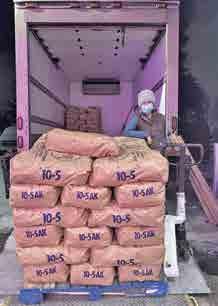
Kyla Byers, Owner, Arctic Harvest Deliveries
food hub,” says Sitka Local Foods Network Executive Director Robbi Mixon. “We’re just about to open our sixth season, and this past season was our best so far.
“We made the same amount of sales last year [as] we did in the past four years combined,” she continues. “All of the social distancing stuff pushed people to buy online, which was good for our farmers in Homer, because with restaurants closed or reduced in capacity, they were able to make more sales through the Food Hub.”
She gives the example of Two Sisters Bakery in Homer, which closed its doors until October. But by listing products on the Alaska Food Hub, it was able to continue selling.
The food hub operates on a weekly cycle, with local purveyors listing and customers adding to their baskets, everything from produce and seafood to
Arctic Harvest Deliveries Debra Mason Shane Baird Cindy Hulquist
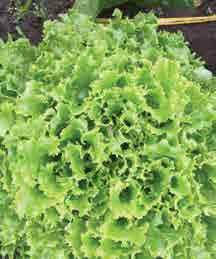
Erich Lamirand Kevin Branson John Letourneau
Helping Businesses in Alaska Since 1969
CPAS & ADVISORS

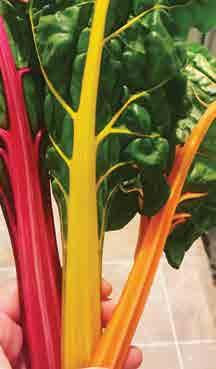
Robbi Mixon, Local Foods Director, Alaska Food Hub Rainbow chard grown in Alaska.
Alaska Farmland Trust
kombucha and coffee. On Wednesdays, vendors deliver the goods to the United Methodist Church in Homer, where the products are aggregated into individual orders for customer pick-up. The Hub also sends products to Seldovia by air. Why Support Local Producers?
When it’s so easy to just take advantage of streamlined delivery options from the Lower 48, why would restaurants take the extra steps required to work with local vendors?
“First, there’s the value of superfresh ingredients; food coming from the Lower 48 is often several weeks old, while most of our products are harvested to order,” says Byers. “It tastes better, lasts longer, and there’s
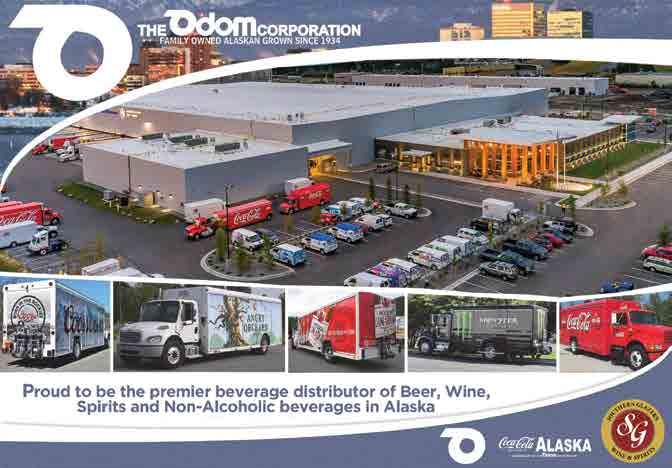
Amy Pettit, Executive Director, Alaska Farmland Trust
less waste. It also shows a restaurant’s customers that they have a connection to the state and pride in Alaska and that they are a part of the community.”
“The palate never lies,” agrees McCarthy. “The quality is already in the product; you can literally eat a raw onion straight out of the ground like an apple because of the quality of the soil here. The terroir—where and how the food is grown—is important.
“You’re also providing long-term sustainability with the money you spend going back to the farmers, ranchers, and manufacturers in the state,” he continues. “A rising tide raises all ships, so from the beginning, we decided to support the full-circle philosophy of supporting those businesses who supported us. As they grow, we grow.”
Pettit credits other Alaska restaurants and chefs, including Alex Papasavus at Turkey Red in Palmer, and Lemongrass Thai Cuisine in Fairbanks, with helping to spur this evolution. “Even fifteen years ago, they were leading the way by demanding local food,” she says. “That commitment really helped mature a couple of farmers into what they are today.”
Helping the Pipeline Grow
Considering that food is a $2 billion industry in Alaska and more than 95 percent of the food consumed here is imported from the Lower 48, more can be done on local and state levels to support the Alaska-grown restaurant supply chain.
Some state effort has been made to encourage the pipeline’s growth with seemingly successful results. Unfortunately, when the funding stopped, so did the programs.
Alaska’s Economic Future—Reasons for Optimism
By Charles Bell, VP of Sales
Away with the naysayers and the pessimists… I am here to say that I am optimistic about the economic future in Alaska for 2021 and beyond. Yes, we’re still in a pandemic and industries are su ering, but Alaskans are resilient and good things are on the horizon. Using a little 20/20 vision and looking into the crystal ball, here are but a few macro reasons join in my optimism:
• ConocoPhillips Willow Project received its fi nal EIS ROD and Greater Mooses Tooth 2 (GMT-2) should achieve fi rst oil production in Q4 2021. • Oil Search entered the FEED stage on the Pikka Phase 1 oil project with an investment decision by the end of 2021. • Oil prices are projected to be stable in the mid-$40. • The Ambler Access Road with 2020 BLM approval will provide access to the Ambler Mining District, one of the largest undeveloped copper-zinc deposits in the world. • Donlin Gold is one of the of the largest and highest grade open pit gold mine projects in the world with an estimated 33.8 million ounces of probable gold reserves. • The real estate market is stable with a statewide increase in home sale prices of 4.3% to 11% and historically low-interest rates, according to Northrim Bank Economist Mark Edwards • The tourism industry is starting to see some signs of recovery for 2021, according to an article authored by Scott McMurren published in ADN. • The USGS released a January 2020 report on potential undiscovered oil and gas reserves in the Central North Slope region estimating 3.6 billion barrels of undiscovered and technically recoverable oil and 8.9 TCF of natural gas.
Life is full of uncertainty, and the pandemic certainly isn’t over. As we navigate 2021, remain positive! Mindset is such an essential aspect of determining success. Remember there are plenty of outstanding opportunities ahead.
Optimist Prime
(Transformers pun)
Charles Bell is the Vice President of Sales at Alaska Business Publishing Co. and is known for his witty puns and successfully helping advertisers reach their target audience. Having worked at Alaska Business since 1998, Charles is well-versed in Alaska’s economic landscape and looks forward to assisting magazine clients with their marketing endeavors.
CHARLES BELL 907-257-2909 | cbell@akbizmag.com


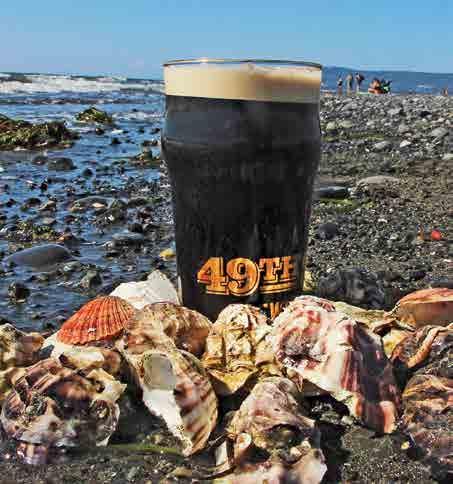
Thundershuck Oyster Stout is brewed with oysters from Jakolof Bay.
49 th State Brewing Company


“The State Division of Agriculture had a restaurant rewards program that provided a reimbursement incentive; restaurants received a portion of the food price back for every Alaskagrown product they purchased,” Pettit explains. “It exposed a number of restaurants to these products, and even though it ran out of funding, ten years later, they are still committed to buying local.”
In 2014, the Kenai Soil and Water Conservation District utilized a USDA grant to create a Farmers Market Promotion Program that resulted in creating more sites where Alaskagrown products were sold and helped to double the number of farms in the Central Peninsula in just two years. It currently sponsors Farm & Food Fridays, where people interested in local foods, including farmers and chefs, can network. It also publishes a local food directory in partnership with the Kenai Local Food Connection.
“One thing we know about farmers is that they are passionate about growing food or raising livestock, but they are not always as passionate about marketing their products,” says Pettit. “The pipeline needs middlemen, or connectors, to bring farmers and restaurants together.”
Infrastructure is important, too. “When we started out, we struggled to find any cold storage to meet our needs and ended up building our own cold storage facilities,” says Byers. “We did a trial project getting retail boxes to Nome, and the biggest barrier was having reliable, consistent temperature control the whole trip up there.”
Because many smaller farms don’t have their own cold storage, a lot of food goes to waste. “It would make sense for the state to get involved in providing more cold storage in farming communities; especially since we’re pretty food insecure up here,” Byers adds. “There is always the potential of being cut off from the Lower 48.”
The Alaska Food Hub has worked to increase the use of hubs throughout the state by providing software for trials at Alaska Pacific University in Anchorage. They’ve also worked with Kodiak Harvest and have advised groups in Palmer and Canada.
“We would love to see hubs all over the state; imagine sending Homer oysters all the way up to Fairbanks and getting some of their food in return,” says Mixon. “One of our big goals is to find ways to connect regional food systems.”
According to McCarthy, not only is it vital that the state provide monetary assistance to help restaurants investing in Alaska-grown products but that it invests in promoting the products as well.
“Advertising the products that are grown and raised in the state is extremely important,” he says, giving the example of New Zealand, which is involved in both the testing and promotion of its Manuka honey, which is now considered by many to be the best honey in the world.
He adds that providing funding to save local farms would also make a big difference.
“One of most challenging things that we face is the loss of farmland: if the state would work directly with farmers to get them the funding they need to remain sustainable and to supporting generational farming, it would provide stability not only in production and manufacturing but in the retail and
The pandemic really showed Alaska— and the country—the importance of the food pipeline.
“The pandemic revealed how global and international our food system is; there were tomato shortages across the country because there was no one to harvest the food, and there was a crisis in meat availability when the Midwest shut down and the supply chain stopped,” says Pettit. “What it showed in Alaska is that people really want Alaska food. Our farmers sold out faster than they ever had and got better prices than ever before; it was exciting.
“I think 2021 will be really telling; it will be interesting to see what happens,” she adds. “Not only did the pandemic bring out people’s commitment to support their neighbors and their communities but it exposed them to the freshness and quality of Alaska-grown food. And once you meet that farmer and taste carrots that are eight times sweeter, you don’t want anything else.”










